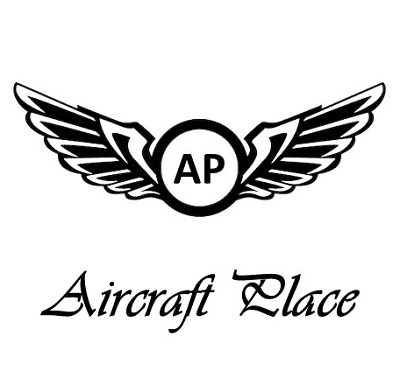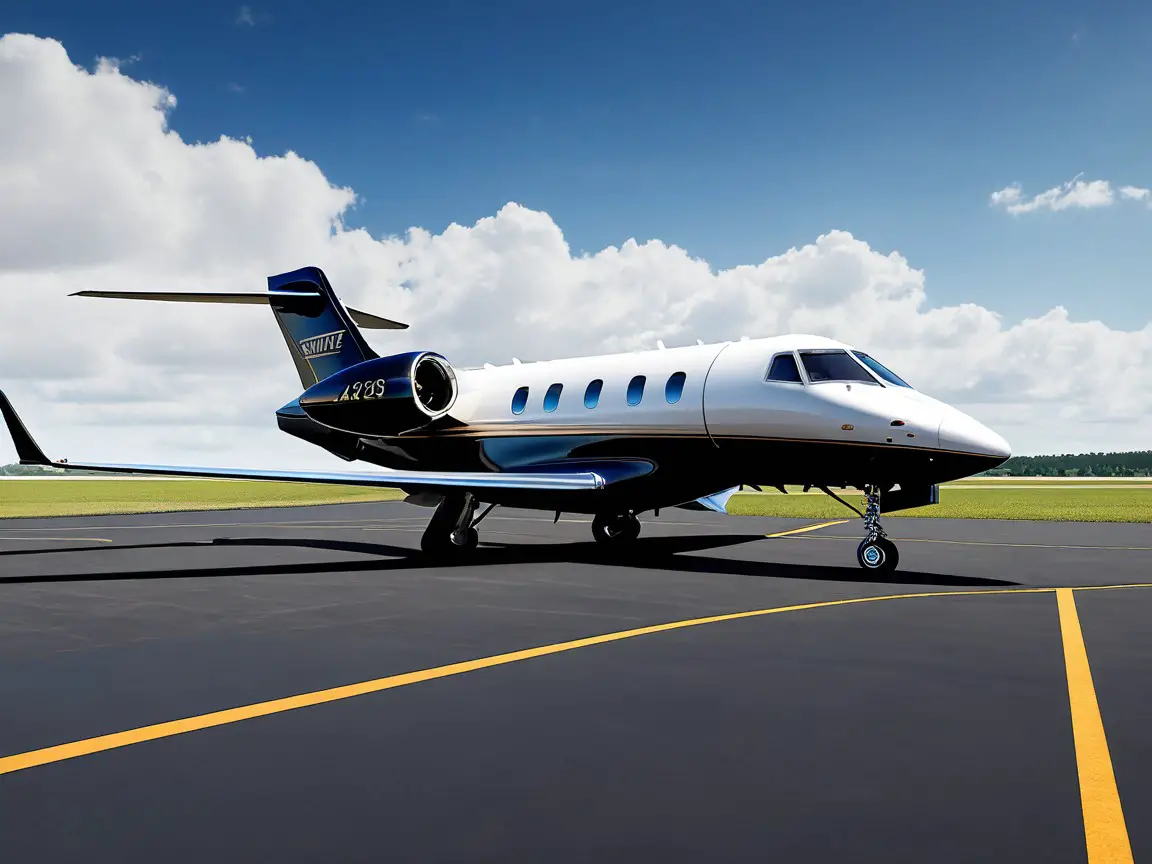When it comes to private jet operations, the length of the runway is a critical factor that can significantly impact the safety and efficiency of the flight.
The runway length required for private jets is determined by a number of factors, including the aircraft’s maximum takeoff weight, the temperature and elevation of the airport, and the presence of any obstacles or terrain in the vicinity of the runway.
Contents
In general, larger and heavier private jets require longer runways to safely take off and land, while smaller and lighter jets can operate from shorter runways.
The length of the runway is particularly important for private jets because these aircraft often operate from smaller, regional airports that may have limited runway lengths.
Inadequate runway length can restrict the range of destinations that a private jet can access, and may even make certain airports off-limits to certain types of private jets.
Additionally, a runway that is too short can compromise the safety of takeoff and landing operations, increasing the risk of accidents and incidents.
Private jet runways must be of sufficient length to ensure the safe and efficient operation of these aircraft.
The length of the runway is crucial for allowing the aircraft to take off and land safely, especially considering the high speeds and performance capabilities of private jets.
Additionally, having a longer runway provides more flexibility for pilots to adjust their approach and takeoff, especially in adverse weather conditions.
Overall, ensuring that private jet runways are of sufficient length is essential for maintaining the safety and efficiency of private jet operations.

Factors to Consider When Choosing a Private Jet Runway
When choosing a runway for private jet operations, there are several factors that must be taken into consideration to ensure the safety and efficiency of the flight.
The first and most important factor is the length of the runway, which must be sufficient to accommodate the specific aircraft that will be using it.
In addition to length, the condition of the runway surface is also critical, as it must be able to support the weight of the aircraft and provide adequate traction for takeoff and landing.
Another important consideration is the presence of any obstacles or terrain in the vicinity of the runway, such as trees, buildings, or bodies of water.
These obstacles can pose a significant hazard to private jet operations, particularly during takeoff and landing, and must be carefully evaluated to ensure that they do not compromise the safety of the flight.
Finally, the elevation and temperature of the airport must also be taken into account, as these factors can affect the performance of the aircraft and the amount of runway length required for safe operations.
Operators can take into account factors such as runway length, width, surface condition, and the presence of any obstacles or obstructions.
They can also consider the runway’s orientation in relation to prevailing winds, as well as any slope or gradient.
By carefully considering these factors, operators can select runways that are well-suited to their specific aircraft and operational requirements, ensuring safe and efficient takeoffs and landings.

How Runway Conditions Impact Private Jet Operations
The condition of the runway surface has a significant impact on the safety and efficiency of private jet operations.
A smooth and well-maintained runway surface is essential for providing adequate traction during takeoff and landing, as well as for minimizing wear and tear on the aircraft’s landing gear.
In contrast, a runway surface that is uneven or deteriorated can increase the risk of skidding or hydroplaning during landing, and may even cause damage to the aircraft.
In addition to surface condition, the presence of standing water, snow, or ice on the runway can also pose a significant hazard to private jet operations.
These conditions can reduce traction and increase stopping distances during landing, as well as compromise the aircraft’s ability to accelerate during takeoff.
This includes assessing the surface condition, checking for any standing water, snow, or ice, and considering the impact of any potential crosswinds.
Additionally, pilots should be prepared to adjust their approach and landing techniques as necessary to ensure a safe and smooth operation.
By being diligent in their assessment and proactive in their approach, operators can help minimize the risks associated with runway conditions and ensure the safety of their passengers and crew..

The Role of Runway Lighting in Private Jet Operations
Proper runway lighting is essential for private jet operations, especially in situations with limited visibility, such as night operations or adverse weather conditions.
It helps pilots to accurately identify and navigate the runway, ensuring safe takeoffs and landings.
Additionally, runway lighting also assists ground personnel in guiding aircraft to and from the runway, further enhancing the overall safety and efficiency of private jet operations.
Properly illuminated runways provide essential visual cues to pilots during takeoff and landing, helping them to align with the runway and maintain a safe approach path.
In addition to providing guidance to pilots, runway lighting also helps to enhance the visibility of the runway for ground personnel and other aircraft in the vicinity.
There are several types of runway lighting that are commonly used in private jet operations, including edge lights, threshold lights, and touchdown zone lights.
These lights are strategically positioned along the length of the runway to provide pilots with essential visual references during takeoff and landing.
In addition to traditional lighting systems, some airports also utilize advanced technologies such as LED lighting and precision approach path indicators (PAPI) to further enhance the safety and efficiency of private jet operations.

Private Jet Runway Design and Construction Considerations
The design and construction of private jet runways must adhere to strict standards and guidelines to ensure the safety and efficiency of operations.
Runway dimensions, surface materials, and lighting systems are all carefully specified to meet the specific requirements of private jet operations.
Additionally, runways must be designed to accommodate a wide range of weather conditions, including heavy rain, snow, and ice, as well as high temperatures and elevations.
In addition to meeting technical specifications, private jet runways must also be designed with consideration for environmental impact and sustainability.
Runway construction can have significant effects on local ecosystems and water resources, so it is essential for operators to carefully evaluate these impacts and take appropriate measures to mitigate any adverse effects.
By carefully considering these factors during the design and construction process, operators can ensure that private jet runways are well-suited to their operational requirements while minimizing their environmental footprint.
The Impact of Weather on Private Jet Runway Operations
Weather conditions have a significant impact on private jet runway operations, particularly during takeoff and landing.
Adverse weather such as heavy rain, snow, ice, or fog can reduce visibility and traction on the runway surface, making it more challenging for pilots to safely conduct these critical phases of flight.
In some cases, extreme weather conditions may even necessitate the closure of runways or airports, further complicating private jet operations.
To mitigate the impact of adverse weather on runway operations, operators must carefully monitor weather forecasts and conditions at their departure and destination airports.
In some cases, it may be necessary to delay or reroute flights in order to avoid hazardous weather conditions.
Additionally, airports may employ specialized equipment such as snowplows, de-icing trucks, and friction testers to maintain safe runway conditions during inclement weather.
Operators can employ various strategies to manage weather-related risks and ensure the safety and efficiency of private jet operations.
This may include closely monitoring weather forecasts, utilizing advanced weather tracking technology, and having contingency plans in place for adverse conditions.
Additionally, pilots can undergo specialized training to handle challenging weather situations, and aircraft can be equipped with de-icing systems and other safety features to mitigate the impact of inclement weather.
By proactively addressing weather-related risks, operators can maintain a high level of safety and reliability in private jet operations.

Safety Measures for Private Jet Runway Operations
Safety is paramount in private jet operations, particularly when it comes to runway operations.
To ensure the safety of takeoff and landing operations, operators must adhere to strict safety protocols and procedures that are designed to minimize risks and prevent accidents.
These measures include thorough pre-flight inspections of runways and surrounding areas, as well as careful monitoring of weather conditions and other potential hazards.
In addition to operational measures, airports also play a critical role in ensuring the safety of private jet runway operations.
Airports must adhere to strict maintenance schedules for runways and lighting systems, as well as conduct regular inspections to identify any potential hazards or deficiencies.
Furthermore, airports must have emergency response plans in place to quickly address any incidents or accidents that may occur during private jet operations.
By implementing these safety measures at both the operational and airport levels, operators can ensure that private jet runway operations remain safe and efficient for all stakeholders involved.
In conclusion, proper runway length is crucial for private jet operations as it directly impacts safety and efficiency.
Factors such as runway conditions, lighting systems, design considerations, weather impact, and safety measures all play a significant role in ensuring safe private jet runway operations.
By carefully considering these factors and adhering to strict standards and guidelines, operators can ensure that private jet runways are well-suited to their specific operational requirements while minimizing risks and maximizing safety.







Leave a Reply